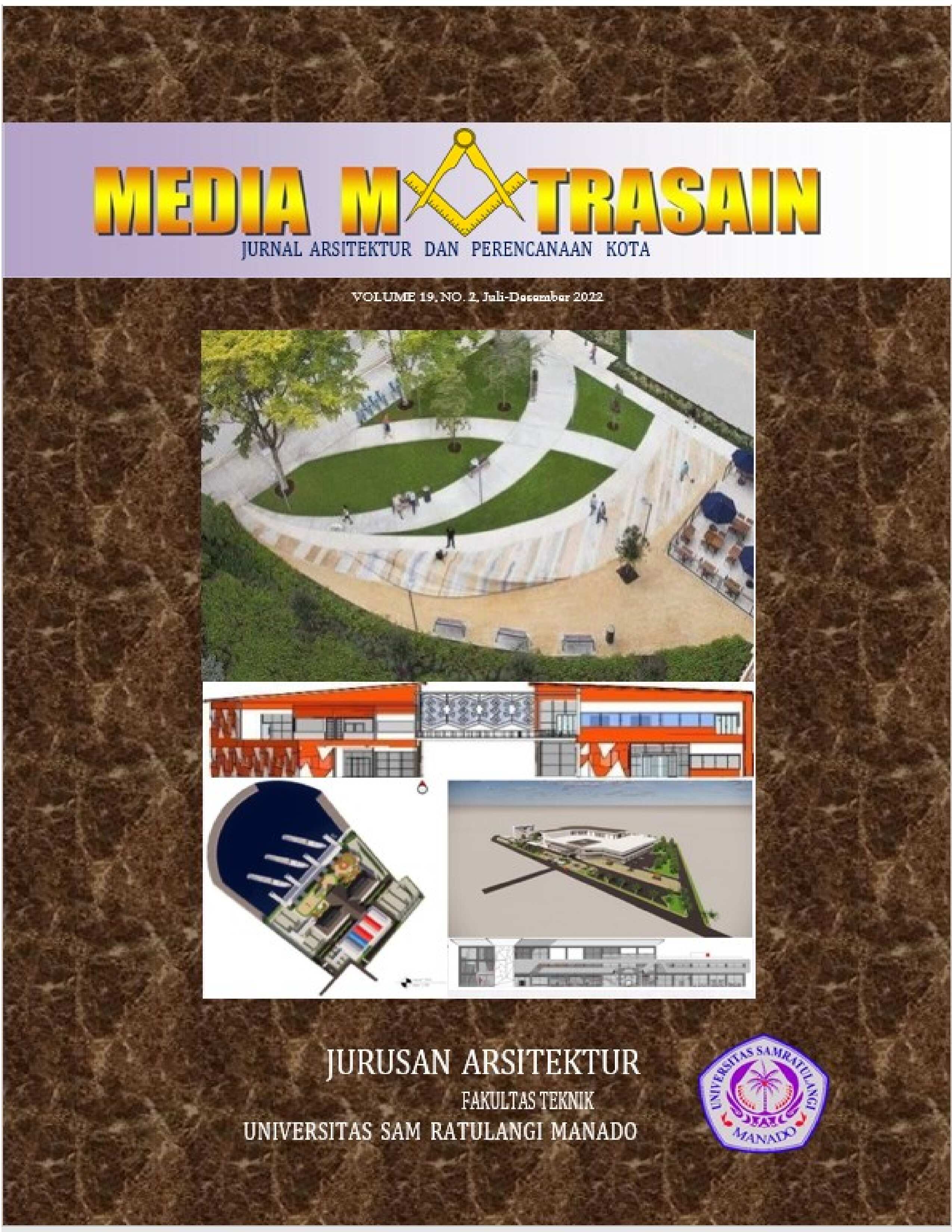PERANCANGAN PUSAT EKO-WISATA BIOTA BAWAH LAUT DI MALALAYANG DENGAN METODE PENDEKATAN TEORI BLOB ARCHITECTURE
DOI:
https://doi.org/10.35793/matrasain.v19i2.46390Abstract
Abstrak
Wisata kekayaan bawah laut saat ini merupakan salah satu sektor yang dikembangkan oleh pemerintah sebagai sumber pendapatan. Sulawesi utara khususnya memiliki pantai dengan 13 jenis terumbu karang dan 91 jenis ikan. Menyadari akan potensi kelautan dan perikanan ini, dibutuhkan suatu wadah yang mampu mengonservasi serta memberikan edukasi kepada masyarakat akan kekayaan alam bawah laut tersebut. Wadah ini juga diharapkan dapat menjadi daya tarik bagi wisatawan melihat keindahan bawah laut Sulawesi Utara. Pusat Eko-Wisata Biota Bawah Laut merupakanjawaban dari semua permasalahan tersebut. Tujuam dari perancangan objek ini adalah merancang objek yang mampu menjadi tempat wisata sekaligus tempat konservasi serta memberikan edukasi tentang keindahan bawah laut, merancang objek yang sesuai dengan potensi lingkungan sekitar site, dan menerapkan teori blob architecture kedalam perancangan. Image – present - test oleh John Zeiselmerupakan metode perancangan yang dipakai, dimana permasalahan yang muncul akan diproses secara terus menerus dalam siklus sehingga menghasilkan perancangan yang lebih optimal. Implementasi tema Blob Architecture pada objek meliputi bentuk bangunan yang menyerupai gumpalan, penggunaan sistem struktur yangmemungkinkan bangunan memiliki bentuk yang melengkung, serta penggunaan material yang mendukung bangunan agar terlihat dinamis.
Kata Kunci: Eko-Wisata, Pantai, Blob Architecture
Abstract
Underwater wealth tourism is nowadays one of the government's income-sources sectors. North Sulawesi, in particular, features beaches with 13 different kinds of coral reefs and 91 fish species. Recognising the potential of marine and fishery resources, subsequently, it is required a place capable of conserving and educating the public about the natural treasure found beneath the sea. This place is also expected to attract tourists interested in seeing the underwater beauty of North Sulawesi. The Underwater Biota Eco-Tourism Center is the answer to all of these issues. The design of this object aimed to create an area, a tourist attraction and a conservation place,provide education about underwater beauty, create objects that follow the environment's potential around the site, and apply the theory of blob architecture to the design. The design approach employed the Image - present -test by John Zeisel, in which emerging issues are processed continuously in cycles to achieve a more optimum design. The Blob Architecture theme implementation on objects comprised of a structural system that enables the structure's form, which resembles a lump, the use of a structural system that enables the building to have a curved shape, and the use of materials that support the building to make it apears dynamic.
Keywords: Eco-Tourism, Beach, Blob Architecture



